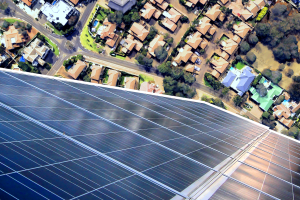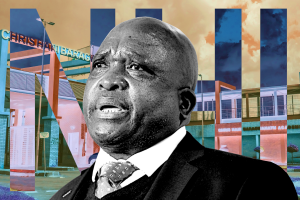Edward Kieswetter faces the big squeeze

National Treasury is facing a revenue gap of around R30 billion, says auditing and consultancy group PwC – but it has no real room left to scrounge around for money to plug it.
The group expects that, with nowhere else to turn, finance minister Enoch Godongwana will pile the pressure on Edward Kieswetter and his team at the South African Revenue Service (SARS) to bolster tax collections to make up the shortfall.
“The mid-term budget policy statement 2023 needs to update fiscal revenue, expenditure and debt forecasts, and specifically comment on how the 2023/2024 funding gap will be addressed,” PwC said.
“The finance minister has indicated that spending cuts and increased borrowing (not higher taxes) can be expected. (However), PwC also anticipates that the minister will place greater responsibility on SARS to improve compliance levels to bolster fiscal income over the medium-term.”
According to PwC, government expenditure has continue to grow far beyond what was forecast in the February budget. At the same time, revenue collection has been strained (although better than expected in some places).
As such, the budget deficit is to grow to 5.5% of GDP this year, compared to a Budget 2023 projection of 4.0% of GDP – and it will be up to the finance minister to make tough choices about how the 2023/2024 fiscal revenue gap of approximately R30 billion will be filled.
Running out of options
Traditionally, Treasury has three main ways to boost revenue.
The first option is to cut spending. A letter issued in late August to various government departments indicated that this would be the Treasury’s goal in the MTBPS, where Treasury urged departments to rein in spending, and spoke up hiring freezes and potentially cutting entire programmes.
While this is likely to be a feature of the November budget, PwC said that results from such a move would take time to deliver and would unlikely be felt in the 2023/24 financial year. Budget cuts are also incredibly politically unpopular, and Treasury’s position has faced major backlash – to the point that suggestions of budget cuts have been heavily downplayed by politicians.
The second option available to Treasury is to borrow more money. While South Africa certainly has access to credit, PwC noted that global financial conditions are not favourable, with demand for funding by developed countries outpacing the emerging world.
“Alongside this, South Africa’s failure to implement significant structural reforms has resulted in the country’s favoured position by international investors dwindling substantially. Offshore funding also carries exchange rate risks. As such, even though we may find credit, it is likely to come at a notable premium,” it said.
The final option available to Treasury is to hike taxes.
This option shifts the burden of closing the gap to an ever-more distressed tax base and the wider population. PwC said that both personal income and corporate income tax groups are already heavily taxed and Treasury is unlikely to draw more from those groups.
However, there is room for a VAT hike, as South Africa’s VAT rate of 15% is still below the global average of 19%. This is also not a popular move, though, because a VAT hike is not progressive and would put pressure on all households and businesses, rich and poor.
“As such, we believe increasing tax rates will be one of the last options considered by the finance minister. Also, the government has never increased taxes in the middle of a fiscal year and has only ever announced tax increases in the MTBPS for the next fiscal year in exceptional circumstances,” the group said.
Turning to the taxman
PwC said that the answer may lie with SARS.
South Africa is currently sitting with a tax gap – the difference between taxes legally owed and taxes collected – estimated to be around R300 billion.
If SARS is able to reduce this gap by only 10% (R30 billion), it would be sufficient to fill the revenue gap in the budget, PwC said.
“PwC believes the most likely response to the need for improving revenues over the medium term would be — as a fourth option for closing a fiscal funding gap — placing greater responsibility and pressure on SARS to improve tax compliance levels,” it said.
“Budget 2023 already noted that a portion of revenue collection improvement was due to improved tax compliance. However, despite positive developments, the institution still has a long way to go towards significantly reducing the tax gap.”
SARS has been ramping up its efforts to draw more tax revenues from non-compliant taxpayers. It has placed a lot of focus on high-net-worth individuals as well as trusts – the latter being used by the wealthy to avoid their tax obligations.
In its most recent reporting, the revenue service said it managed to sniff out over R16 billion in taxes owed by big companies, almost R14 billion owed through audit investigations, and close to R3 billion from its work with high-net-worth individuals.




















